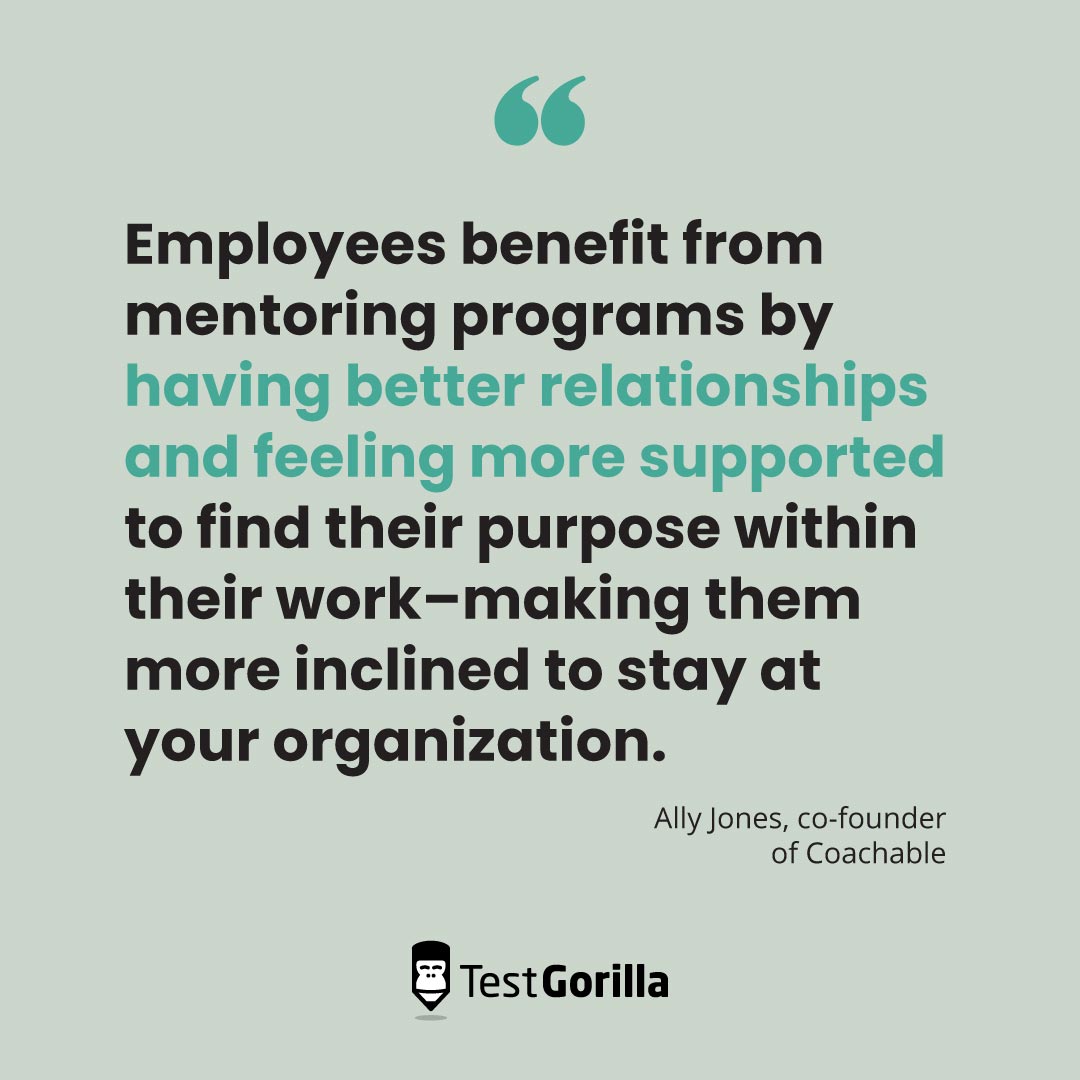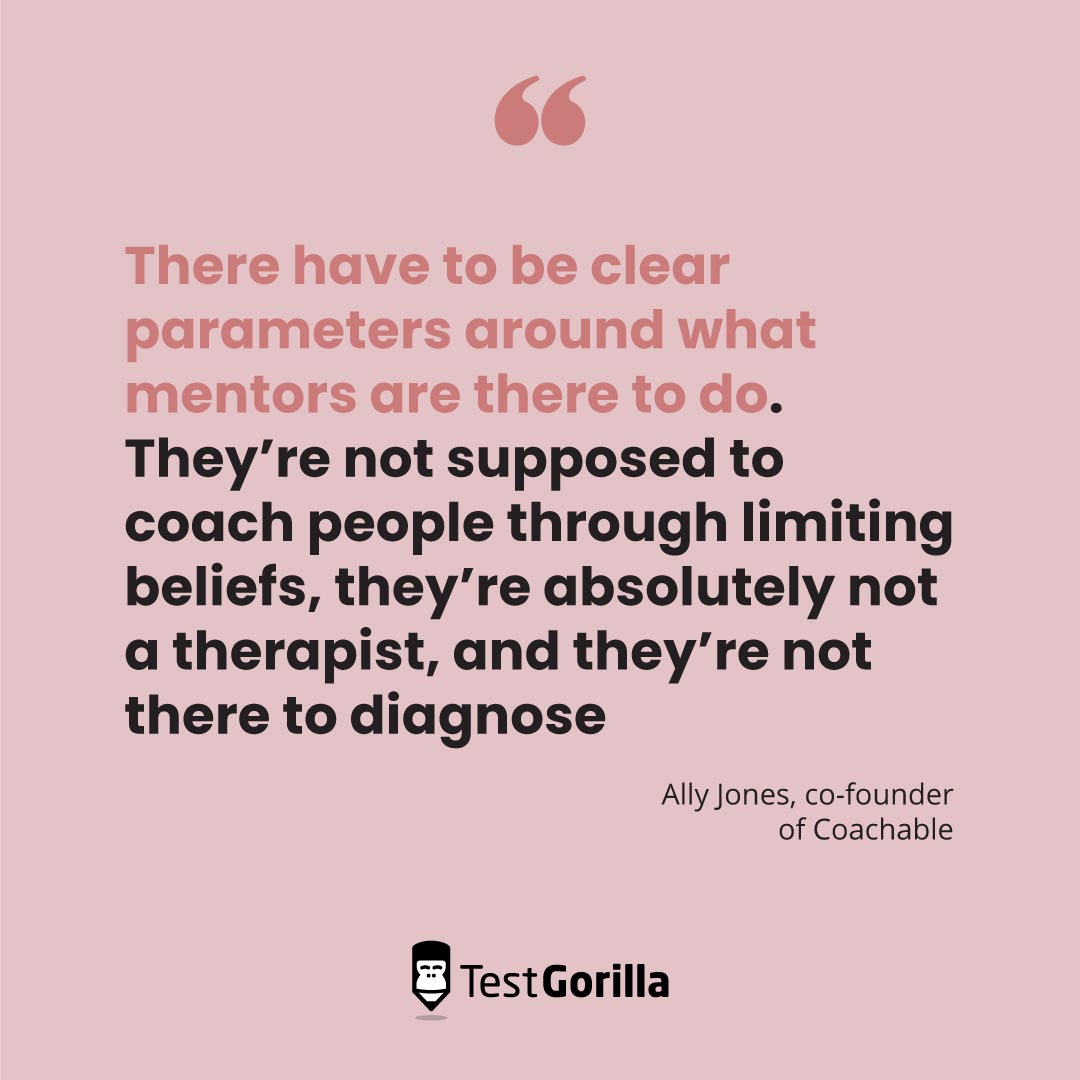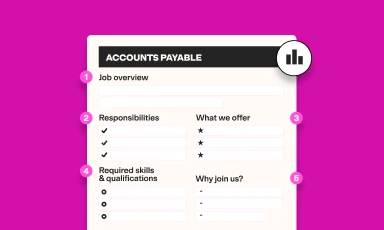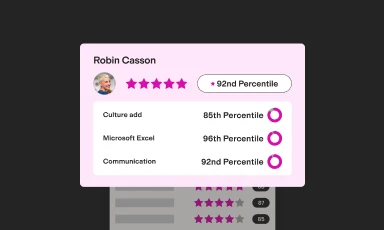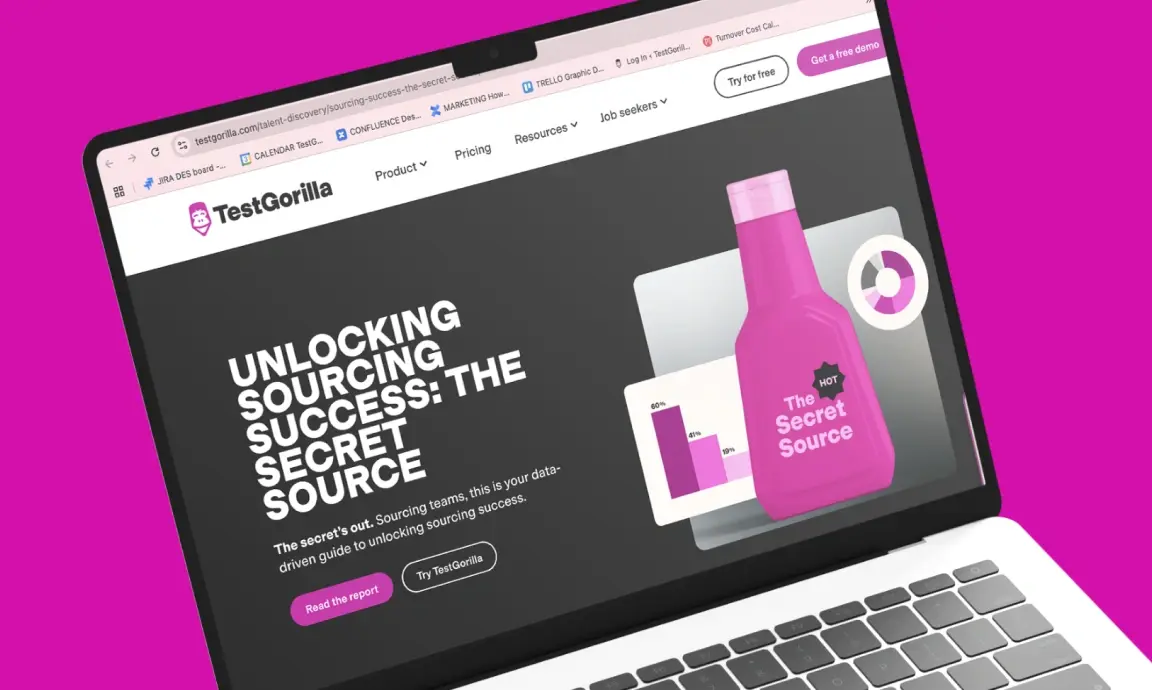How mentoring nurtures diversity in the workplace
Mentors can have a huge positive impact on employee growth. Having someone to turn to when you have questions, feel unsure of yourself, or just need honest advice can have a huge impact on your career.
Mentorship also acts as a vital enabler for underrepresented groups and thus helps to improve diversity and inclusion (D&I) efforts. With most people of color failing to reach management levels or getting stuck in middle management, having a mentor can help these individuals get the support they need to progress in their careers.[1]
Despite mentorship being so valuable, however, it’s not always easy to access. Factors such as: where you grew up, where you went to school, and what connections you have can impact your ability to find effective mentors. Therefore, people from underrepresented groups may get left behind in this area.
This is why you should create a mentorship program in your workplace. Employees from all backgrounds can benefit from the guidance and support they receive from mentors, which can make it easier to engage and retain your people and develop future leaders.
In this post, we’ll explain the difference between mentoring and coaching, outline the benefits of mentoring, and show you the ten steps to take to launch a successful mentoring program in your organization.
First, let’s clear up any confusion.
What’s the difference between mentoring and coaching?
While there are definitely similarities between the two, mentoring and coaching are not the same things.
“Mentoring is more directive, while coaching is non-directive,” says Ally Jones, co-founder of Coachable. “If you’re mentoring someone, you’re sharing your own experience, while if you’re coaching, you’re in a headspace of encouraging critical thinking.”
A mentor doesn’t have to be someone in a leadership role: Mentors can also be peer-to-peer.
Keep in mind a mentor does need to have experience in the sphere they’re mentoring in, which isn’t necessarily the case with coaching. However, there are certainly important skills that overlap between good coaches and good mentors, like active listening and low self-orientation. This is the ability to focus on the other person rather than yourself.
Now you know that, let’s take a look at the benefits of mentoring.
How mentoring benefits your company, employees, and D&I
Mentoring doesn’t just benefit the mentee: These programs can have a positive impact on all your employees, company, and D&I efforts.
Here’s how:
Helps develop hard and soft skills: Mentoring programs can help your employees develop skills, both hard and soft, without you having to invest in training materials or external courses. In turn, this gives you a stronger pool of potential leaders and candidates for internal mobility.
Provides shared expertise, insights, and perspectives: By creating a mentoring program, you give more experienced people the opportunity to share their expertise with new hires or less experienced employees. At the same time, mentors can also learn from the unique perspectives of their mentees.
Boosts employee satisfaction and retention: Getting your people to participate in mentorship programs helps you engage them better, and can even lead to better retention rates (one company found that employees participating in a mentoring program were 49% less likely to leave during that period than employees who weren’t).
Deepens relationships and creates a wider network: Having your people participate in mentoring programs helps them both deepen their relationships with colleagues while building a larger professional network for ongoing support. This can be especially beneficial for those from underrepresented groups, like women, who often lack the networks that male employees have built up.
Develops cultural competency: You can help improve your company’s overall respect for and understanding of different cultures by connecting people from varied backgrounds through mentoring relationships. These programs provide employees from underrepresented groups a safe space and allies within the organization and create opportunities to learn from colleagues with diverse experiences.
Allows people from underrepresented groups to succeed: Mentoring programs give marginalized employees a designated path for gaining guidance and support, as well as help them become advocates for one another. These programs can also help them move up in the workplace, having a positive knock-on effect on diversity in leadership roles. This is because when people see people like them in senior roles, it starts to seem more of an attainable goal.
Helps people overcome imposter syndrome: Both becoming a mentor and being a mentee can help your employees overcome imposter syndrome. By teaching others, mentors get a better appreciation for their own knowledge and expertise. For mentees, having a mentor to give you honest feedback and advice gives you a safe place to go when you’re feeling unsure of yourself, rather than getting lost in a rabbit hole of self-doubt.
“Employees benefit from mentoring programs by having better relationships and feeling more supported to find their purpose within their work–making them more inclined to stay at your organization.” – Christie Mann, co-founder and chief executive officer of UpLevel Productions.
The best insights on HR and recruitment, delivered to your inbox.
Biweekly updates. No spam. Unsubscribe any time.
10 steps to establishing a successful mentoring program
Now you know the benefits a mentoring program can have for your employees and company, let’s take a look at 10 steps to organize, launch, and refine a successful mentoring program in your organization.
1. Identify your goals
Ally says the first question to ask yourself is what you’re hoping to achieve with your mentoring program. “This should guide your decision on what’s the right type of mentoring for your organization.”
For example, your goal might be to boost promotions for a certain group, whether that’s women or employees from other underrepresented groups. In this case, traditional mentoring would be a good fit. Or maybe you want to help new employees from underrepresented groups feel integrated into your company and its culture, in which case peer mentoring could work well.
Either way, you need to be very clear on what your goals are to avoid your program getting misdirected.
You should also define which metrics you will use to track the progress and success of your program. For example, the percentage of women moving into leadership roles or the retention rate of new employees from underrepresented groups.
Pro tip: You don’t have to just have one goal for mentoring at your organization. Launch various mentoring campaigns, like women in leadership and peer-to-peer initiatives, so you can offer a program that fits the needs of each of your employees.
2. Define the program structure and tools
Once you're clear on the goals of your mentoring program, you need to clearly define how it’s going to work and which tools your people will need.
A few things to consider include:
How the pairings will work: Will this be a one-on-one program or group mentoring?
How formal the structure is: Is there a set schedule your people should follow in terms of how and when they meet? Or can they get together whenever it works best for them?
How often will pairings meet: Is this a weekly initiative? Monthly? Bi-monthly?
Remember, the structure of the program should align with your goals. If your objective is to make new hires feel comfortable and included in the company, it’s probably best to keep it to one mentor per mentee and a relaxed approach.
This is also the time to outline any tools your people may need. Necessary resources might include access to specific training courses for mentors or additional materials to share with mentees.
3. Establish criteria for mentors and mentees
Your next step is to set the criteria for who can participate in the program. This should also be linked to the program’s goals. For example, if the goal is to get more women into leadership positions, one of your criteria for participation will obviously be gender.
Aside from demographics and roles, there are other factors, like skills and personal traits, that you’ll want to consider. You need to know what mentees are looking to get out of the relationship so you can ensure your mentors have the relevant experience and skills.
This is also true of mentors, says Ally. “Get mentors to be really picky about what they want to mentor others on. The more specific the better."
Additionally, be aware that some of your mentees may be looking for coaching, not mentoring, so make sure the difference is clear when people express interest in the program.
4. Define roles and responsibilities
In order to ensure the success of your program, you need to clearly outline roles and responsibilities for both mentors and mentees.
Starting with mentees, make it clear that once they decide to participate in the program, they have a responsibility to see it through. Mentors are providing their time and expertise, and consistent mentee no-shows for meetings or check-ins can be extremely frustrating and hamper the ability to make progress.
For your mentors, make it clear that while their role is flexible, they are a mentor and don’t have to be anything more.
“There have to be clear parameters around what mentors are there to do. They’re not supposed to coach people through limiting beliefs, they’re absolutely not a therapist, and they’re not there to diagnose,” says Ally.
So while mentors may occasionally shift into a more coaching-oriented role, make it clear that they’re not responsible for addressing underlying issues their mentees may face. Rather, they’re there to share guidance and support related to the objectives of the program and offer any advice they can draw from their personal experiences.
If mentors see their mentee needs coaching or therapy, they should refer them to the appropriate professional rather than try to deal with it if they’re not trained in those disciplines as this can do more harm than good.
5. Recruit mentors and mentees
Now you’ve organized your program, it’s time to start finding participants. You can share information about the program in your internal communications, send out a video presentation explaining what it entails, or mention the details in your next all-hands meeting.
However, “just because you build it doesn’t mean people are going to come,” warns Ally. You may have to go out and actively recruit mentors and mentees for the program. This is why she recommends showcasing the value everyone can get out of the program.
Rather than just describing how it works, clearly outline the skills, knowledge, or experience mentees can gain and the transformative role mentors can play.
Note that getting senior stakeholder buy-in is essential for encouraging employees to participate. Ally says, “If I'm a mentor or mentee and my manager is saying, ‘We're really busy, I need you to reschedule your mentoring session,’” it’s going to be harder to get people to want to participate. “If this is something your organization deems a priority, it needs to be prioritized alongside other business objectives.”
6. Use talent assessments to evaluate skills
Assessing the skill levels of both mentors and mentees can help you ensure you get the outcome you want from your program.
Use talent assessments to test both hard and soft skills. This lets you measure how prepared mentors are for their role, as well as identify mentees’ skills gaps and their progress (if skills development is an objective of the program).
For example, imagine you’re starting a mentoring program to help entry-level employees move up in your marketing department. First, test your mentors on relevant skills, like branding, social media, and marketing analytics, to make sure they have sufficient knowledge to pass on to their mentees.
You can then test mentees on these skills, first at the start of the program and later upon completion, to get clear metrics on how effective the mentorship was. Regardless of the program objectives, you should test mentors and mentees for the soft skills necessary to thrive in a mentorship relationship. Mentors need active listening, communication skills, and the ability to give honest feedback. Mentees need to have a growth mindset, be curious, engaged, vulnerable, reliable, and proactive in expressing and pursuing what they want to get out of the program.
7. Match mentors and mentees
Matching mentors with mentees may seem like a simple task, but there’s quite a lot that goes into it.
Some programs let mentees choose their mentors, while others assign them. While you want to keep shared interests, skills gaps, and career interests in mind, what looks like a good match on paper doesn’t always work out in practice.
As a first step, have participants do personality tests like the Big 5 (OCEAN), Enneagram, or 16 Personalities test assessments to check how compatible their personality types are.
To really make sure mentors and mentees are meshing, Ally recommends having “chemistry conversations between mentors and mentees… Both parties need to feel at ease. A great chemistry conversation is when you walk away feeling like you could laugh or cry with that person. If you couldn't do both, you're probably not going to be the best match.”
Make sure your pairings are flexible and reevaluate them after those chemistry conversations to ensure each pair is the best possible match. If not, you can reassign mentors to mentees where necessary, helping everyone get the most out of the experience.
8. Provide training and support
While your mentors may have experience in the subject they’re mentoring about, they may have never been in this type of role before. Additionally, mentees may have no idea what to expect from the program if they’ve never been involved in mentorship before.
That’s why you should offer a session for mentees before the program starts about what makes a great mentee, as well as outline some of the challenges or frustrations they may face.
For mentors, you need to equip them with the right skill set to help them be flexible in their role, switching between mentor, advisor, and coach as needed.
While coaching and mentoring aren’t the same thing, Ally also recommends investing in some foundational coaching skills training for your mentors as this can “really elevate an internal mentoring program”. This could cover some things like active listening, how to ask a good question, and how to establish psychological safety. All this can help mentors feel better equipped to fill their role.
9. Monitor, track progress, and iterate
As we mentioned, you should have defined the metrics you’ll be tracking to measure the success of your program back in step one. After a set period of time, use these metrics to evaluate your program's success against its initial goals.
Aside from tracking key performance indicators, collect and evaluate feedback from participants to gauge mentor and mentee satisfaction with the experience.
As mentioned previously, you can also use talent assessments to evaluate both hard and soft skills development.
Finally, be sure to organize regular check-in sessions where mentors can share their experiences, ask questions, and seek advice from fellow mentors. This is especially important if it’s anyone’s first time in the role as they may have doubts and concerns about how well they’re doing.
10. Don’t forget about reverse mentoring
Up till now, we’ve been talking about traditional mentoring: A more senior team member as a mentor and a junior or less experienced one as a mentee. However, reverse mentoring can also provide incredible value to your employees and company as a whole.
This approach essentially flips the traditional mentorship model on its head: Less-experienced employees are tasked with educating, developing, and upskilling their senior leaders. This can be especially valuable for a multi-generational team where senior team members may lack key digital skills like using social media platforms or AI technology.
There are a number of benefits to running a reverse mentoring program. It helps senior employees learn new skills, gives younger team members a confidence boost, and helps you strengthen networks between staff at different levels.
Mentoring: A great way to enhance skills, D&I, and engagement in the workplace
Having a good mentor can have a huge positive impact on someone’s career and increase representation of underrepresented groups at senior levels. This is because it helps people advance and overcome challenges. This can lead to greater representation in leadership roles and, therefore, more diverse perspectives that feed into better creativity, problem-solving, and product.
Successful mentoring not only improves diversity and employees’ skills–it can also help you create a workplace that engages your people and makes them want to stick around.
However, access to mentors depends a lot on who you know and where you come from.
That’s why creating a mentoring program at your organization can help you level the playing field for employees from underrepresented groups, in turn creating a more diverse workforce, which can transform your business.
To create a mentoring program:
Identify your goals
Define the program structure and tools
Establish criteria for mentors and mentees
Use talent assessments to evaluate skills
Define roles and responsibilities
Recruit mentors and mentees
Match mentors and mentees
Provide training and support
Monitor, track progress, and iterate
Don’t forget about reverse mentoring
Use talent assessments to ensure your participants have the hard and soft skills they need to ensure the program’s success. You can also use these to measure skills before, during, and after the program to track how effective it’s been.
Make your mentorship program a success. Talent assessments let you hire and develop people with the right skills for fruitful mentor-mentee relationships and growth. |
Sources
“Labor Force Statistics from the Current Population Survey.” (2022). U.S. Bureau of Labor Statistics. Retrieved July 25, 2023. https://www.bls.gov/cps/cpsaat11.htm
Related posts
You've scrolled this far
Why not try TestGorilla for free, and see what happens when you put skills first.



